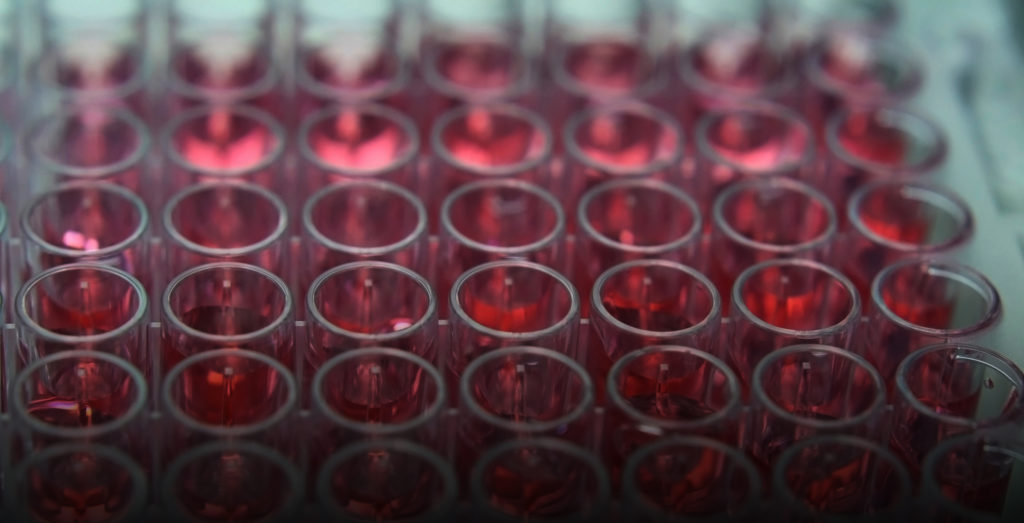How Does Allergic Disease Protect Against Developing Asthma After Viral Infection?
How Does Allergic Disease Protect Against Developing Asthma After Viral Infection? https://pediatricsnationwide.org/wp-content/uploads/2022/04/AdobeStock_27296900_Web-Crop-1024x523.jpg 1024 523 Mary Bates, PhD Mary Bates, PhD https://secure.gravatar.com/avatar/c6233ca2b7754ab7c4c820e14eb518c8?s=96&d=mm&r=g- April 20, 2022
- Mary Bates, PhD

Neutrophils and IL-4 are critical in preventing post-viral airway disease in mice with pre-existing allergic disease.
In a new study, researchers from Nationwide Children’s Hospital show that in a mouse mode simulating human respiratory viral infection, pre-existing allergic disease prevents the development of asthma following viral infection. Further experiments revealed that this protection against post-viral asthma depends on neutrophils and the cytokine interleukin 4 (IL-4).
Although rates of asthma and other allergic disease have increased in much of the world, the mechanisms driving this increased prevalence are unclear. One area under investigation is the role respiratory viruses play in the development of asthma. For instance, infection with respiratory syncytial (RSV) in infancy is associated with an increased risk of asthma, primarily in those without any allergic disease at the time of infection.
To investigate how allergic disease could be protective against pros-viral asthma, Mitchell H. Grayson, MD, chief of the Division of Allergy and Immunology at Nationwide Children’s, and his team used a mouse model that mimics human infection with RSV. When these mice are infected with Sendai virus, they go on to develop post-viral airway disease. For the new study, Dr. Grayson and colleagues induced allergic disease in the mice before viral infection using house dust mite allergen.
“When we make the mice allergic, they do not go on to develop post-viral airway disease,” says Dr. Grayson. “It suggests that making them allergic is actually protecting them from allergic disease following viral infection.”
The researchers found that this protection depended upon neutrophils, as depletion of neutrophils at the time of infection restored the susceptibility of allergic mice to post-viral airway disease. Neutrophils appeared to take up viral particles through an IL-4-dependent process, leading to protection from post-viral airway disease in mice with pre-existing allergic disease.
In addition, Dr. Grayson and his team demonstrated that human neutrophils from donors with allergic disease were able to reduce RSV infection of human airway epithelial cells in vitro, suggesting these findings could be relevant in human patients. However, the researchers say that further studies are needed to firmly establish the protective link between pre-existing allergic disease and post-viral airway disease in humans.
Dr. Grayson, who is also professor of pediatrics at The Ohio State University College of Medicine, says that overall, the findings illustrate the significant overlap between allergic disease and antiviral immune responses.
“A viral infection can drive the development of allergic disease, but the flip side is that allergic disease can prevent the development of post-viral airway disease,” he says. “The study shows that allergic disease is not always bad. In fact, it suggests allergic disease might have evolved in part as a protective effect to respiratory viral infection.”
This article appears in the 2022 Spring/Summer print issue. Download the full issue.
Reference
Hussain SA, Rohlfing M, Resiliac J, Santoro J, Peeples ME, Garcin D, Grayson MH. Atopic neutrophils prevent postviral airway disease. Journal of Immunology. 2021;207(10):2589-2597.
Image credit: Adobe Stock
About the author
Mary a freelance science writer and blogger based in Boston. Her favorite topics include biology, psychology, neuroscience, ecology, and animal behavior. She has a BA in Biology-Psychology with a minor in English from Skidmore College in Saratoga Springs, NY, and a PhD from Brown University, where she researched bat echolocation and bullfrog chorusing.
-
Mary Bates, PhDhttps://pediatricsnationwide.org/author/mary-bates-phd/December 27, 2016
-
Mary Bates, PhDhttps://pediatricsnationwide.org/author/mary-bates-phd/
-
Mary Bates, PhDhttps://pediatricsnationwide.org/author/mary-bates-phd/
-
Mary Bates, PhDhttps://pediatricsnationwide.org/author/mary-bates-phd/






